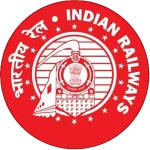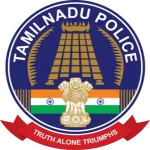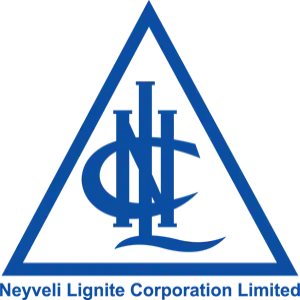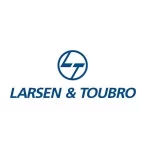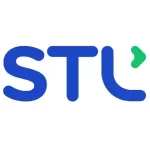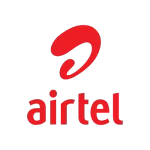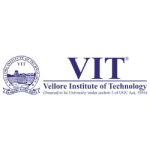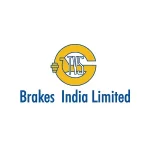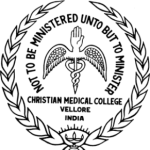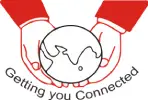FIBRE IN MOTION
Market Leading Technology
VLINK has a strategic tie up with RADWIN, who has invested over 150 man-years in the development and engineering of its air protocol, to best fit scenarios that require high capacity, reliable connectivity in high interference environments. This performance is achieved by utilizing the latest market developments, as well as unique mechanisms to deal with interferences, NLOS (Non-Line-of-Sight) scenarios, mobility applications, etc.
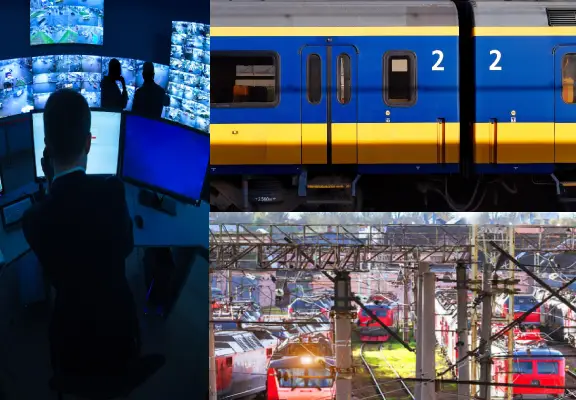
RADWIN technology has been recognized as the market leading technology for NLOS scenarios required in the deployment of the new LTE networks. Today RADWIN technology is used by Verizon, Telus (Canada) and other global cellular operators to provide high capacity, SLA based connectivity in full NLOS scenarios.
RADWIN is utilizing the same advanced technological building blocks, with the necessary modifications for its transportation solutions.
Proven performance and experience in the Rail & Metro Segment
RADWIN is one of very few vendors that can present a proven track record for the implementation of Train-to-Ground communication projects in the rail and metro segment. This segment has unique requirements in terms of technology, implementation procedures, support longevity, customization and standards adherence etc.
RADWIN, with its partners, has successfully implemented projects for similar required Transportation applications. In addition, RADWIN has also been selected for many new projects which are planned to start implementation in the near future. These awards came following a series of extensive trials by the customers, where RADWIN has proven better performance.
To date RADWIN Train-to-Ground solutions are deployed over 1,000 miles of tracks, connecting over 1,300 trains around the globe.
Management & Analysis tools for Transportation
RADWIN offers a complete range of management and analysis tools, designed specifically to monitor and optimize the performance of its Train-to-Ground communications networks. The WINManage is a Web Based Network Management System that enables network owners to manage RADWIN devices from the OCC providing real time monitoring of the rail and metro radio equipment, to enable easier analysis of systems during the deployment phases and afterwards.
RADWIN also offers an offline analysis tool, which collects all relevant measurement points from radios deployed in the network and then conducts an analysis on the various RSS levels, capacity, handovers, etc. to improve overall network performance.
FIBREINMOTION® SOLUTION: GENERAL OVERVIEW
SOLUTION COMPONENTS
RADWIN FiberinMotion Train-to-Ground Communications solution is based on two primary elements:
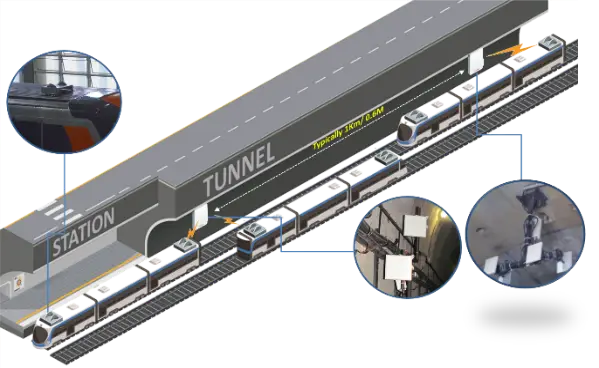
- Transportation Base Stations (TBS)
Deployed along the trackside, providing continuous coverage and connectivity to the moving trains in the route. Each TBS is deployed with multiple antennas in MIMO mode (depending on the requirements and topology). These base stations are deployed at intervals up to 1.5km (depending on topology, country regulations and required capacity).
- Transportation Mobile Units (TMU)
Installed on-board the train, with up to 3 train antennas on the roof of the train. The TMU aggregates traffic to/from the different units and services on-board the train and communicates continuously with the nearest relevant Base Station (TBS). Dual TMU configuration (at both ends of the train) is installed to enhance resiliency and coverage.
TECHNOLOGY BENEFITS
RADWIN FiberinMotion Train-to-Ground Communications solution was designed specifically for the Transportation segment. Leveraging its field-proven air interface, designed to work in high-interference, Near/Non- Line-of-Sight (nLoS/NLoS) scenarios, and implementing specific capabilities required for the Transportation industry, RADWIN’s solution includes the following advantages:
Performance
- High capacity, up to 750Mbps per TBS or TMU (depending on model type)
- Extended coverage per Base-Station, reducing the number of track-side installations required and saving substantial infrastructure costs (e.g. poles, electricity, network), as well as on-going maintenance.
- Supports trains/metros at speeds of up to 300km/h (designed for higher speeds)
- Seamless handover between base stations with handover time < 50msec.
- Fully synchronized network that operates on a common time base for all the Base-Stations, thus avoiding potential mutual radio interferences. This capability is essential to maintain a consistent and high throughput along all the routes and operation scenarios.
- Low and fixed service latency and jitter – essential for delay sensitive applications such as CBTC, Video and VoIP.
- QoS over the air, enables prioritization and assured service level of different services
Architecture
- Distributed architecture with no single point of failure, Supporting Layer-2 & Layer-3 Networks.
- Configurable uplink/downlink bandwidth ratio, enabling flexibility and variety of services over the same infrastructure.
- Multi-band radio – support of 4.9 to 6.0 GHz over a single platform (exact bands are defined per regulation in the specific country). Other frequency bands also available, as well as special customization options for additional frequency bands.
- Very simple and easy installation
Reliability
- Operates in harsh outdoor conditions and complies with IP-67 standard.
- Complies with the railway standards including EN50155, EN50121 and EN61373.
- Supports optional redundancy for both Base Stations and Mobile units.
- AES 128-bit integrated advanced encryption used in order to protect and secure data
Monitoring and Analysis
- Advanced Management System for troubleshooting and maintaining an online instant system status overview
- Enhanced system analysis tools allowing deep investigation and drill down into various parts of the network
LAYER - 2 ARCHITECTURE
RADWIN FiberinMotion® solution layer-2 architecture is based on:
- Radio Base Stations (TBS) deployed along the trackside, providing continuous coverage and connectivity to the moving trains/metros in that route. Each TBS is deployed with multiple antennas in each direction.
- Mobile Radio Units (TMU) installed on-board the Train that aggregate traffic to/from the different units and services inside the train and communicate continuously with the nearest relevant Base Station (TBS). Each Train can be equipped with 2xTMUs, one at each end of the Train. Each TMU can be connected to multiple Train antennas.
Dual Train radio architecture also supports built-in redundancy, leveraging the 2xTMUs on-board. Furthermore, Link Aggregation can be implemented to potentially double the throughput per train.
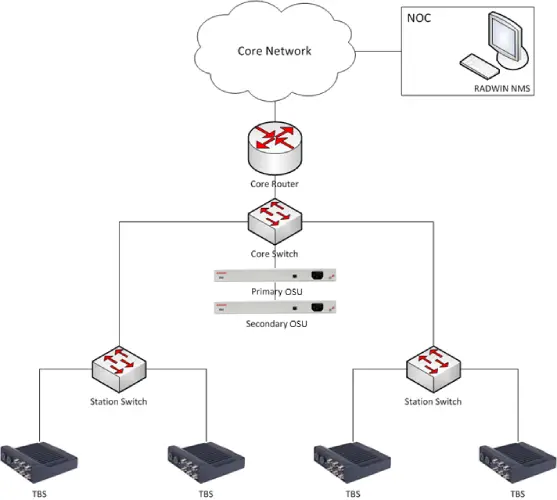
LAYER - 3 ARCHITECTURE
In order to allow proper networking and route update of a moving Train, RADWIN has introduced a new concept which is based on a Central Controller – Centernet. The Centernet controller is located at the OCC and acts as a proxy for addresses assigned between OCC/Internet and Train.
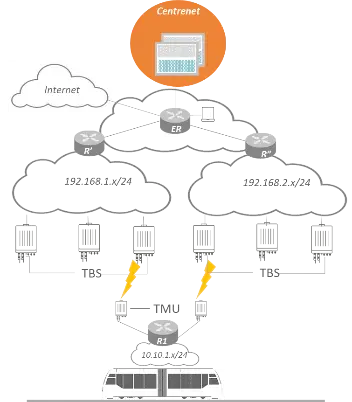
The Centernet keeps track of the trains’ whereabouts. During an Inter Base Hand Over (IBHO), as the mobile radio (TMU) connects to a new TBS, it registers its new location at the Centernet by sending to the TBS a list of all on-board IP addresses. The TBS Registers all the IP addresses in the Centernet. Any packet arriving from the internet, addressed to a Train element subnet, is routed from the Edge Router to the Centernet controller. The same applies for packets arriving from the NOC (e.g. CCTV or CBTC servers) targeted to Train network elements. The Centernet, according to the Target IP address, locates the Target TBS, removes Layer-2 header and Encapsulates the packet with new Layer-2 header and Layer-3 header targeting the TBS which is registered with the target Element node. The packet is then sent back to the network and arrives to the target TBS. The target TBS de-encapsulates the packet, Finds the correct TMU according to the Target IP and sends the packet to the TMU on the Train. The Centernet controller is active only in the downlink. Any packet from a Train Network element to internet do NOT pass through the Centernet (as there is no additional benefit using the Centernet in this direction).
Centernet Highlights
- High Capacity: up to 30Gbps per Controller, multiple controllers can be aggregated
- Standard & Flexible: Linux Based, Using Commodity Hardware (per RADWIN specification). Supports multiple network architectures
- Robust: Wireless KPIs are not affected, including short handover duration, short latency and jitter
- Transparent: The inter-subnet handoff is fully transparent to the train units
- Scalable: Multi-Controller architecture to support capacity evolution
- Redundant: No Single point of failure.
PROPOSES NETWORK ARCHITECTURE
Track-side Network Proposed Architecture (TSN)
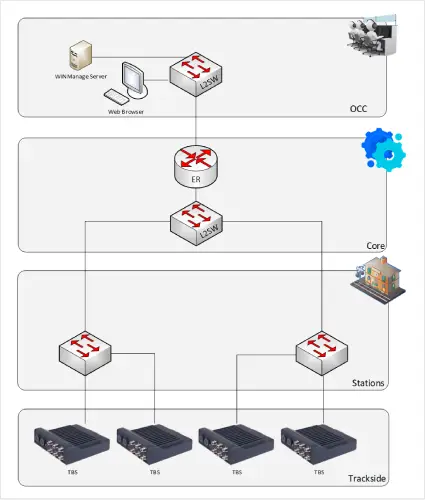
- RADWIN solution is based on transparent layer 2 architecture. The Radio Base Stations (TBS) deployed along the trackside are connected to the backhaul network switches via GbE copper or Fiber (optional), as a layer 2 based network.
- The backhaul network (existing or provided by the system integrator/customer) is used to aggregate traffic to/from the TBS’s and send it to the control/data centres.
- The required network architecture will comprise of a single router, and L2 switches (should support VLANs). All data communication to/from the train will pass via the core router.
- The TBS’s network will be synchronized via GPS based system (via an integrated GPS unit in the TBS)
TBS Proposed Site Architecture
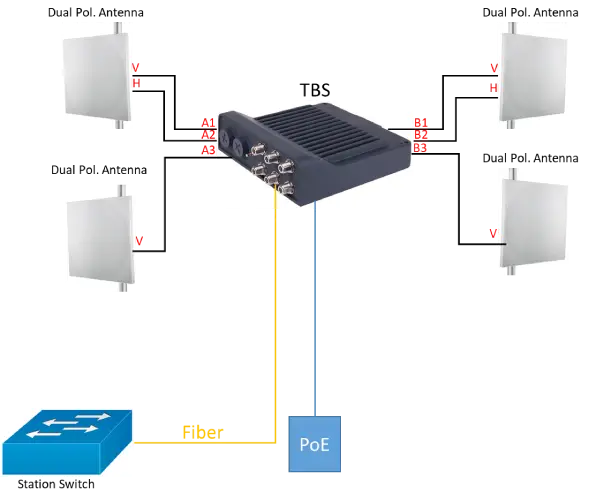
The trackside Radio Base-Station for Indoor includes:
- Base Station Radio unit (TBS)
- 4 antennas – 2 in each direction (utilizing dual polarization flat Antennas for MiMo 2×2 and additional antennas for diversity and spatial diversity)
- Cables and connectors
- AC PoE (Power Over Ethernet) Unit (Alternatively the TBS can be powered by 802.3at Switch)
On-Board Proposed Architecture (OBN)
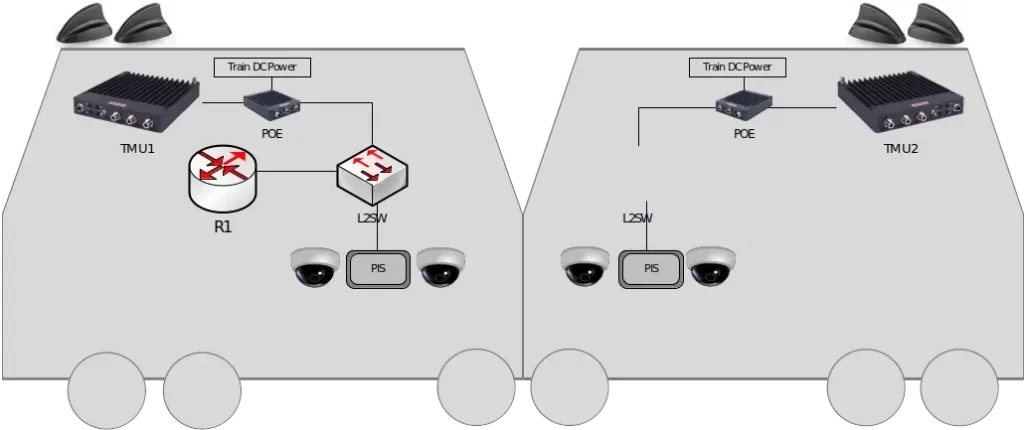
- A Mobile Radio unit (TMU) is deployed at each end of the train, connecting, via PoE, to the train’s internal network (Train network is in the responsibility of the SI). This topology enables on-board redundancy and improved performance by an Intra-Train Handover mechanism (ITHO).
- Multiple Train directional antennas will be installed on the Train at each end, near the TMU, connecting to it via RF cables.
- All of the train’s traffic is sent via an on-board router (provided by SI) to the active TMU providing the highest throughput (automatically selected by the system).
- The on-board train network should support VLANs and have a Layer-2, 1Gbps connection between TMUs.
Synchronization
In order to use the Radio spectrum in the most efficient manner and to mitigate interference between adjacent Radio nodes so the system can provide the best possible throughput, RADWIN solution uses TDD and TDMA synchronized air protocol. The synchronization provides the master clock to all TBSs in the network.
Synchronization can be done either by:
- Internal GPS already built-in inside the TBS units
- External synchronization units for Indoor/Outdoor (ISU/OSU) which are connected to one of the wayside network switches. Redundant OSUs/ISUs ensure higher resiliency of the solution.
MANAGEMENT & MONITORING APPLICATIONS
WINManage Network Management System
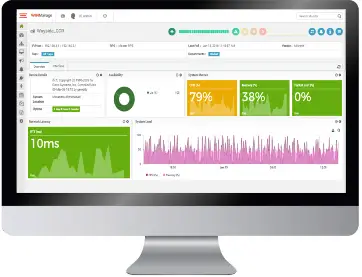
WINManage is a Web Based Network Management System that enables network owners to manage RADWIN devices from a single and/or multiple Network Operation Centres (OCC).
Using WINManage, users can enhance service levels while improving operational efficiency and troubleshooting.
Using WINManage, users can view Highly flexible and customizable dashboards, reports, widgets and alerts giving near-real time status of the Trackside and Train Radio network.
User can retrieve Device Information and Drill-down to retrieve detailed node information.
Users can Monitor equipment availability, response time and other system health indicators as well as view alerts in the last 24 hours.
System supports Multiple user access-level permissions and built on a Scalable architecture to support network growth.
OUR VALUABLE Clients
